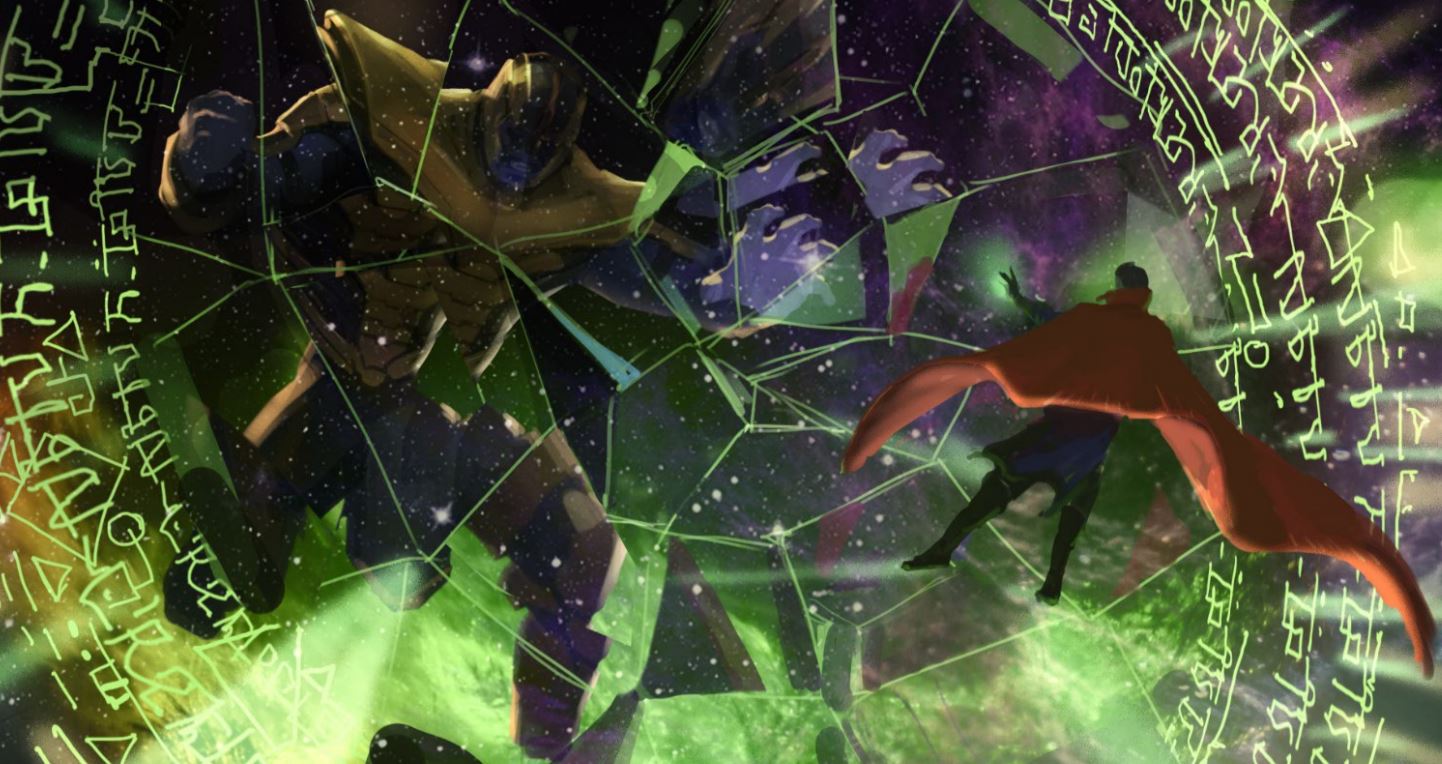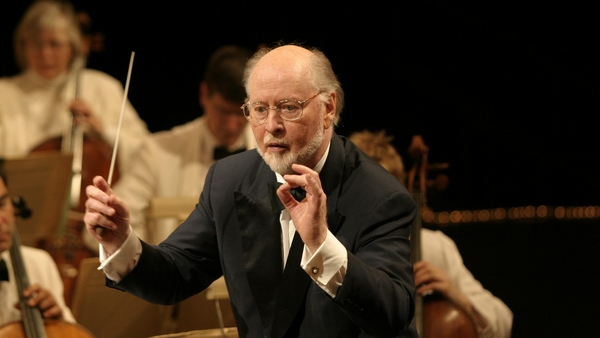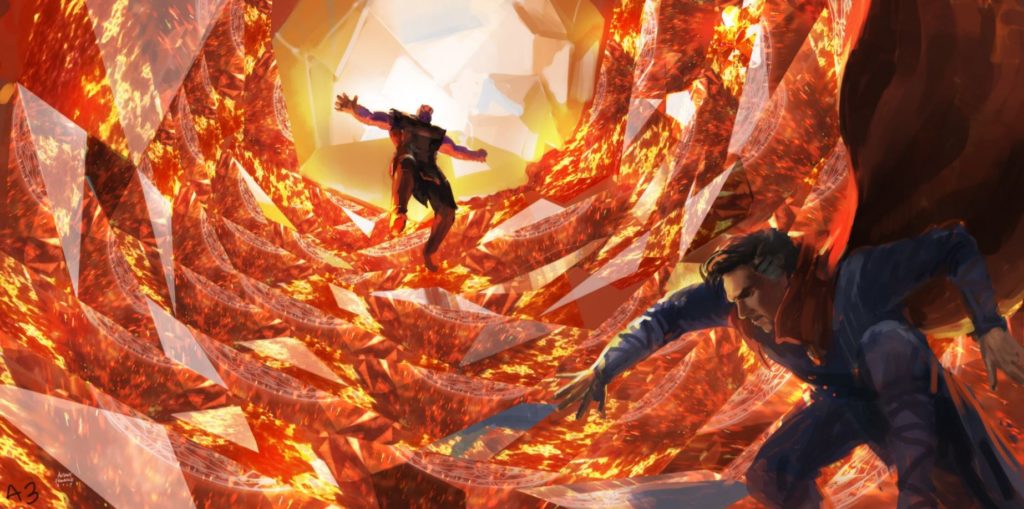
When you go to the movies, the images on screen can bring out all sorts of emotions – excitement, intrigue, humor, fear, etc. Well, before even one frame of film is shot, a team of very talented concept artists works hard to imagine heroes, villains, costumes, vistas, scenes and settings that will one day light up the silver screen.
Now as far as being wowed at the cineplex, it’s hard to get more amazing and spectacular than the films in the Marvel Cinematic Universe. One above-mentioned concept artist adding to that experience is Anthony Francisco. His job, in short, is to give movie goers something they’ve never seen before. That’s not an easy task in this day and age. Anthony is part of a small team at Marvel Studios working to catapult beloved characters – like The Avengers – from the panes of the comics to the big screen…even before there’s a script or director on board.
Perhaps it’s fitting that in the 10th Volume of the Creatives on Creatives series (a blog I started at my company) profiles an talented artist who’s had such an important role in the success of Marvel’s incredible 10 year run. Avengers: Endgame is, now, the most financially successful motion picture of all time. So while we say good bye to some characters following that incredible finale to Marvel’s Phase 3, we say hello to Anthony to learn all about his contributions to the MCU’s many memorable scenes, concepts, and characters.
GoSeeTalk: Your work at Marvel is as nebulous as it is fascinating. You work with multiple departments, so let’s start simple: What is your title?
My exact title is “Marvel Studios Senior Visual Development Artist.” It’s really crazy to say that out loud. [Laughs] But it was longer, actually. I was Visual Development Concept Illustrator.
How does one “concept”? Is someone giving you a vague idea to kick start some visuals, like or are you tied to a script? How do you receive and process direction?
Sometimes I’m given something that has clear direction, but most of the time I work on the movies before there’s a script or a director. Doctor Strange is a good example. At that point, we didn’t have a director, but we were already exploring the looks for the magic in that world, and to make sure it’s different from the lighting and magic and space elements in something like Thor or Guardians of the Galaxy. Even though they’re both magical in their own way, we had to make Doctor Strange feel mystic and Guardians feel sci-fi, but it still had to have some tie-ins so you would feel like they could all exist in the same world.
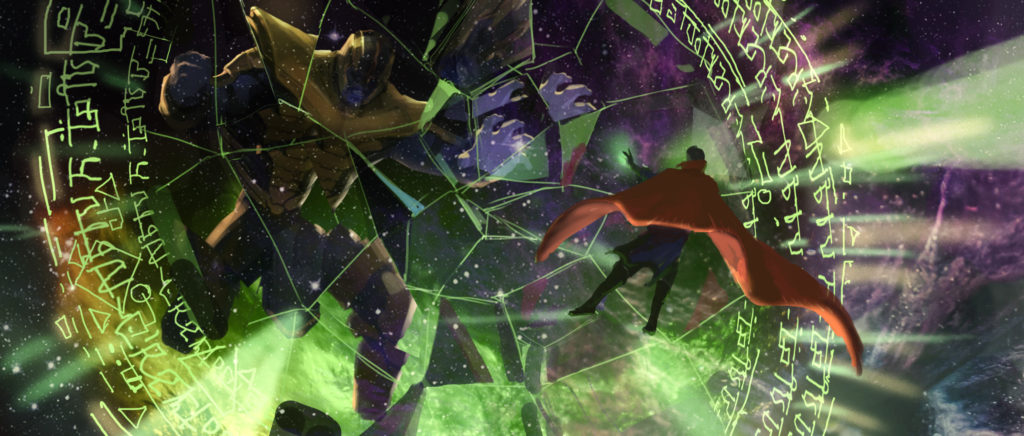
What have you been asked specifically to create or concept and what goes into your research?
For Avengers: Infinity War, I was given a specific task to come up with ideas for how Doctor Strange would fight Thanos. It was fun, but the idea of making something so epic was really difficult to figure out, especially something you haven’t seen before. I came up with an idea to have Thanos use a combination of the Infinity Stones to open portals and take comets out of their orbits, and also break up planets to rain down on Doctor Strange.
I even had an idea of bringing a red dwarf close to a black hole and use the gravitational pull between them to imprison Doctor Strange. I watched a lot of Cosmos to get an idea of the science behind this, and how these occurrences in space worked, and I tried to get Thanos to use solar flares from the sun to battle Strange.
Then there was an idea of how the stones would also transport them to different planets where they would fight on. And I had to do all that in one image. In the movie, it ended up being a moon that Thanos broke up and hurled at the Avengers. My idea was also breaking the moon into pieces and sending the chunks.
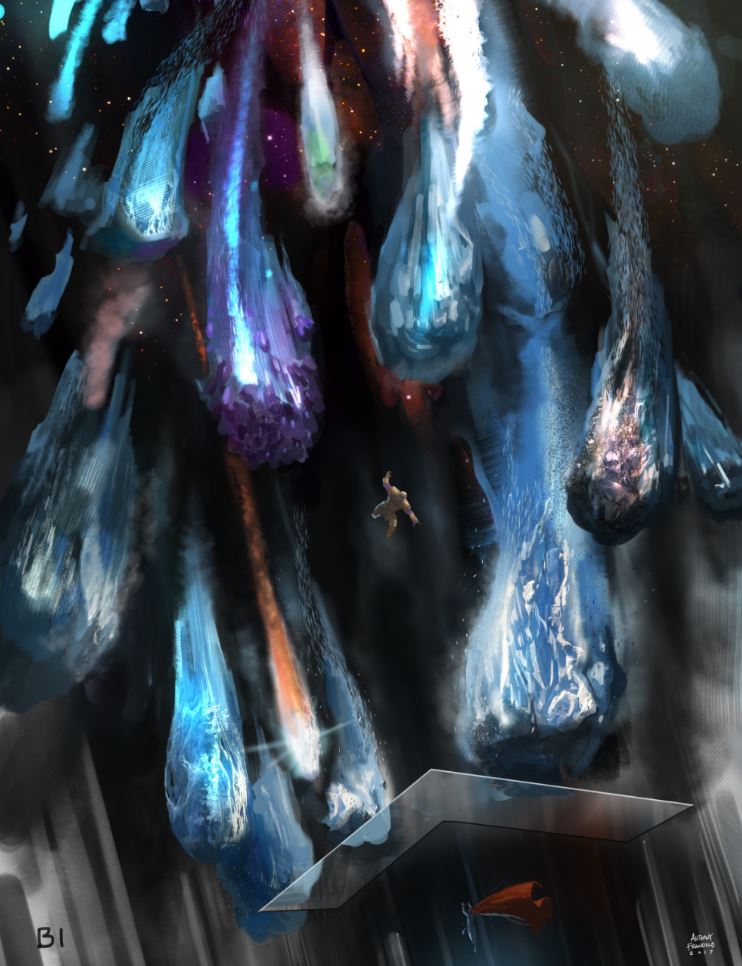
Wait. Your ideas made it into the movie that didn’t even have a script yet? That is so awesome!
Yeah, [Laughs] it is really awesome. It evolved from my ideas, but you can see that that’s where it all came from, and no one will ever know. Well, now you know. [Laughs]
For anyone who hasn’t seen it yet, Avengers: Endgame is phenomenal. What are you most proud to have contributed to that film?
Our projects overlap quite a lot, and one idea can bleed into another project. But what I did on Avengers: Endgame was the time travel visual concept. There’s a part where they stand on the platform, and you see them shrink into a small light ball and then they drop through the floor and it sends ripples through space-time. That was my idea, too.
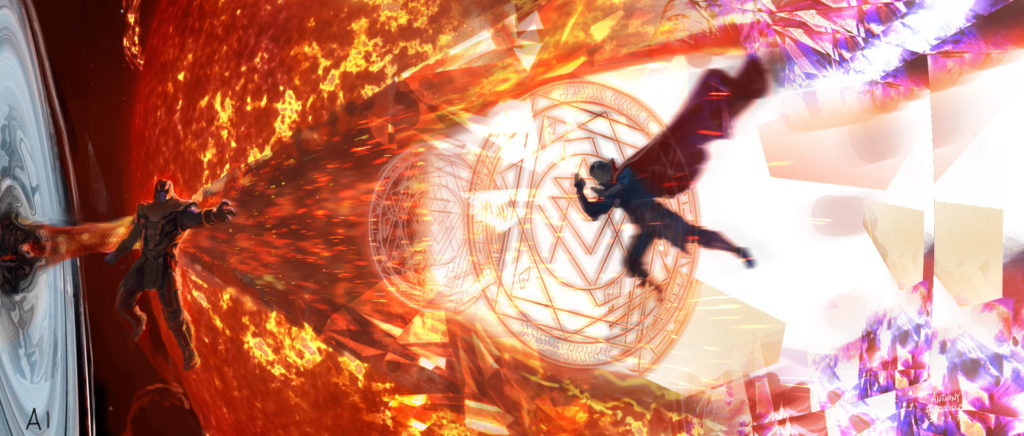
I always thought that concept artists created backdrops and settings, and the feel of the world. I didn’t realize that you are contributing to the plot and the events of the story.
Most concept artists, well, my friends anyway, help solve problems visually. At Marvel, aside from doing character and creature designs and, yes, sometimes environment design, I also work on high concept ideas like what Ant-Man looks like when he shrinks down very small. I try to think of how that world would look. That’s what the key frames are for.
Sometimes I get lucky, and I come up with an idea for one of those epic moments with a lot of team members coming together. But sometimes it’s a very emotional moment where the acting is the most important thing happening. We would suggest expressions and how the body should look. Then when it comes to making the movie, the production team tries to match those key frames shot for shot even down to the lighting.
How do you work with costume designers to get photo-realistic looks of certain materials and fabrics?
Our department work closely with the costume designers once they get hired on a show. The people who come on board specific to a particular movie are the directors, scriptwriters and costume and production designers. Our department gets to work with each of them, and sometimes things are designed before they get hired. Since we are full time, we get to start the designing the characters early.
It is a lot of collaboration, but as part of the Visual Development Team we’re responsible for designing the heroes and villains of the MCU. However, most people assume that the costume designer designed everything.
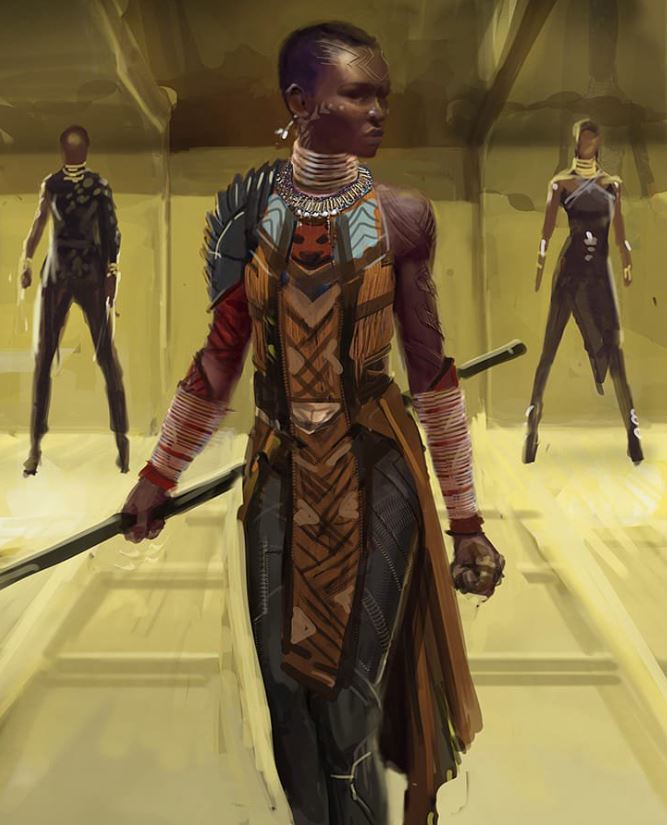
But it all starts with you. There’s an expression that goes, “whoever has the pen, has the power.” So I whatever you and the other four members of the Visual Development Artists come up with is what we see on screen. You set the stage for literally everything.
We set the framework, that’s true, but it really takes everyone’s help to make what you see in the theaters. And I do have to mention Ruth Carter, the costume designer for Black Panther. She mentions me and the team in her Black Panther interviews. She’s really nice about it, and says I’m the architect for the Dora Milaje.[Laughs]
We now have a team of six – Jana, she’s an amazing artist. If we need more help, we would hire a select group of freelance artists. Right now we’re about fifteen people, but we had a really big team for Infinity War and Endgame because we did both of those movies at the same time.
I watched some special features on a movie that was done by Aardman, the British animation powerhouse. The stated that they work on the story for two years before they shoot a single frame of animation. How much time do you invest before things start coming together?
At Marvel, it’s nice because the comics are already there, and our source material is easy to reference. We don’t need two years because these comics have been around for many, many years and the characters are already loved. So that’s one thing we have going for us.
How have you developed your skills over the years? How did you go to from pens and pencils to what you use today?
Now, I use Photoshop mostly. I still sketch and I like the feeling of pencil and paper and brush pens. There’s a different way my mind works when I’m using pencil because with Photoshop, you could undo so easily, and try a lot of different ideas quickly which is so amazing. You can change everything and still save off what you were working on. I also use an awesome rendering program called Key Shot, and Z Brush which is a sculpting program, and I am trying to learn Cinema 4D. Those programs can help give you a photo-realistic look of something, but sometimes I just like painting, and I really like doing faces.
Is there something you find yourself drawn to, or do people come to you for one very specific thing? What gives you the most joy to create?
My specialty used to be creature design. I love doing really scary and horrific designs. But I needed more abilities in my tool box, so I had to learn character design and environment design and when I did, things opened up even more and made me realize I loved doing things I’d never even considered. Right now, I like creating worlds. Currently, I’m developing my own projects and pitching it and there’s a lot of interest lately, so we’ll see how it goes. [Laughs]
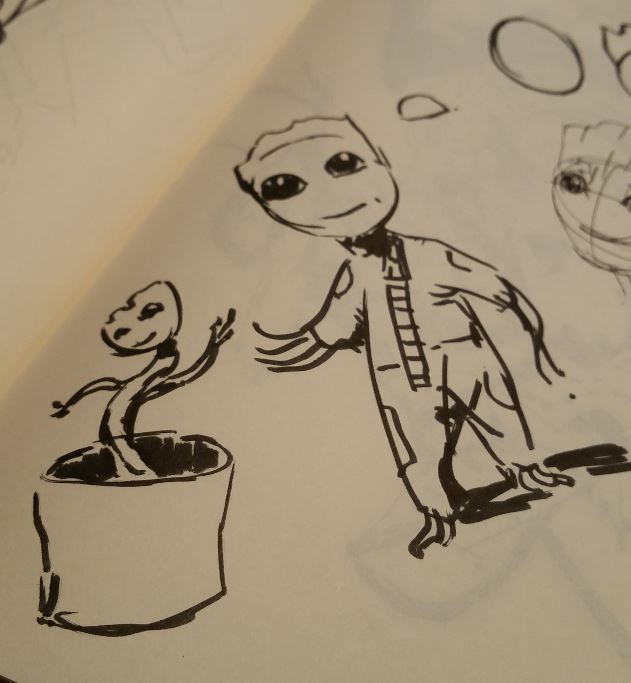
Working with a team is a lot better than being isolated because each of you help the project grow. Who has helped you the most, and what’s the dynamic between your team at Marvel?
I’ve been doing concept art for 20 years now. I’ve been at Marvel for seven years. Over all those years, everyone I’ve met has helped me become a good designer. The experience you get from other people, even though they aren’t artists, is valuable. You can understand how someone reacts, or their personal style, or thought process, so I try to learn from everyone.
When I was in high school, I had older friends and they would talk about their relationships with their girlfriends. So I learned from that and tried to apply that when I had a girlfriend. If they did something that made their girlfriend mad, well, I wouldn’t do that. I would do what worked. I had a friend and we both loved playing basketball. But his girlfriend made him choose between basketball and her…and I learned that I’d better date someone who likes sports. [Laughs] Problem solving is something I focus on, and I love trying to do that.
But it was my friend Louie Sison, who is a Design Director at Wilson Associates, who got me into comics. He’s one of my best friends. When we were kids in the Philippines, every day in the Summer, we would walk to the comic store. We would draw together, and his Marvel collection was what got me hooked. Opening those comics, I was blown away by the worlds and all the characters.
Since you’re in the Marvel world now, is there a character you didn’t think much of in the comics, but have changed your mind after working on or seeing on screen? Do you have a favorite?
My favorite is always going to be Wolverine. The Avengers comics really got me interested in this world, but when I first saw Iron Man on screen, I thought, “Wow! I didn’t know Iron Man could be so cool.” I never read those stories and I just dismissed the character. But when the movie was coming out, my friend Charlie Wen was working on it. He’s the one who got me in the door, and he’s the reason I started working at Marvel Studios. He’s gone on to do his own projects, but I was always asking him how Iron Man could be interesting. I just couldn’t see it…I guess my brain wasn’t good at telling stories yet. [Laughs] But when I saw how they made it so realistic, I was hooked from then on, and I made it a goal to work with Marvel.
Being in the creative business, we put in a lot of hours. At the end of a long day, or week, what do you do to unwind, and what is your creative fuel?
Right now, it’s my wife and my two kids. They give me my energy. They have such silly ideas that lead to amazing things. But for a meal, my wife cooks the best sinigang – it’s my favorite Filipino dish. My family is the best thing that ever happened to me!
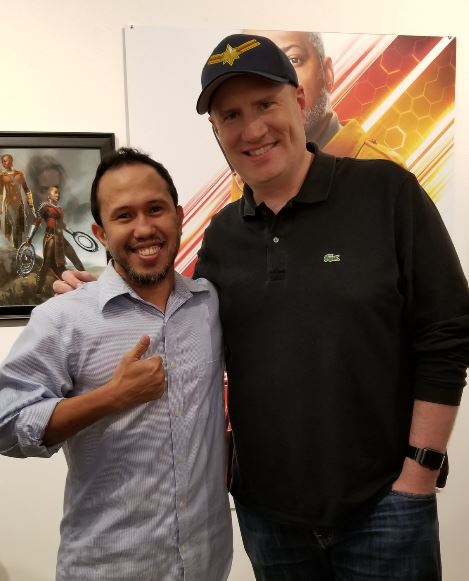
Thanks very much to Anthony for his time and input. He is currently at work on projects in Marvel’s Phase 4 – title set for theatrical release as well as titles on the Disney+ streaming platform include Shang Chi, Black Widow, Wanda Vision, and Eternals.
You can follow Anthony and see more of his work on his various accounts: Instagram, Twitter, and Facebook.
